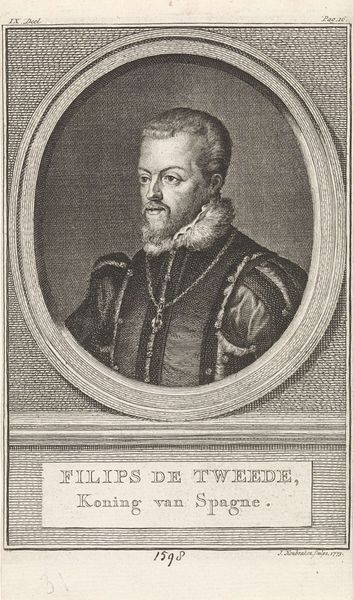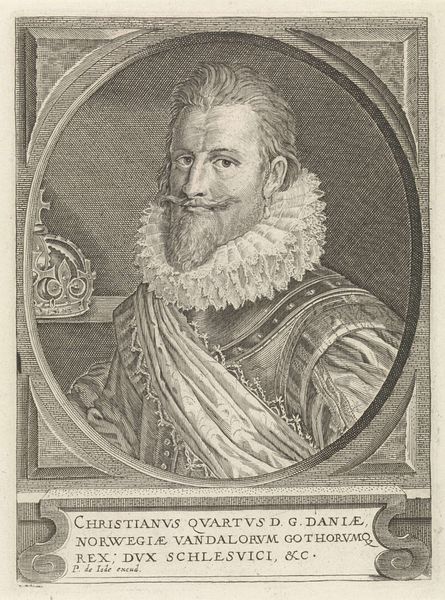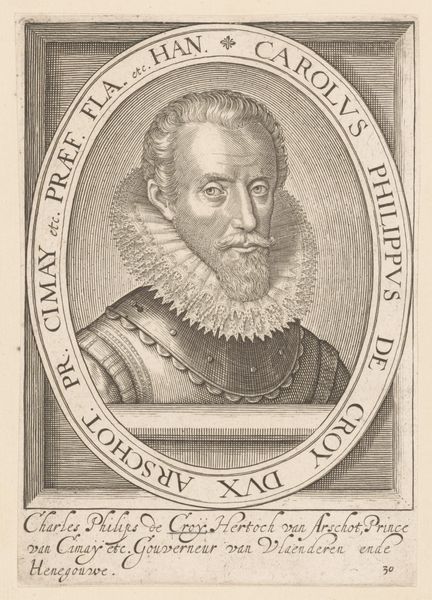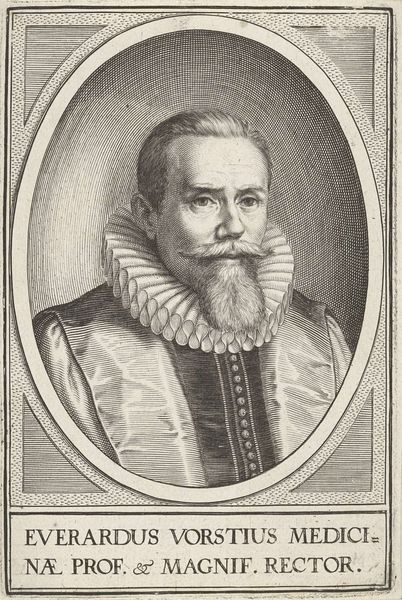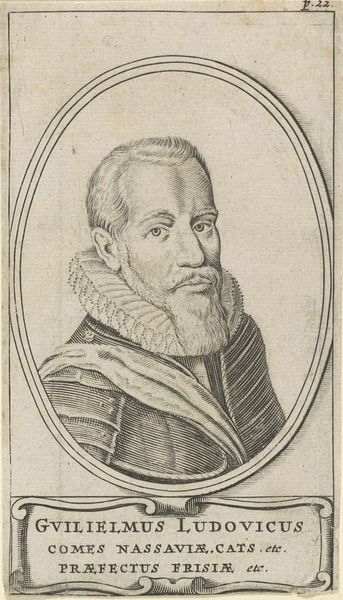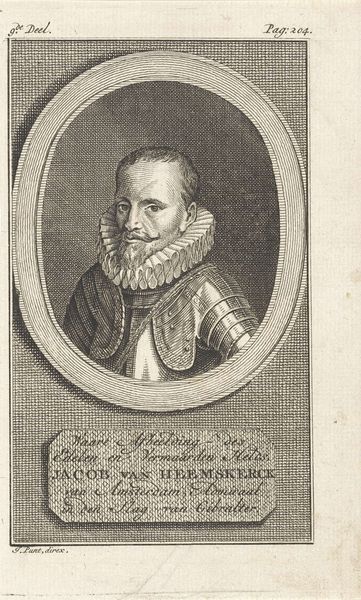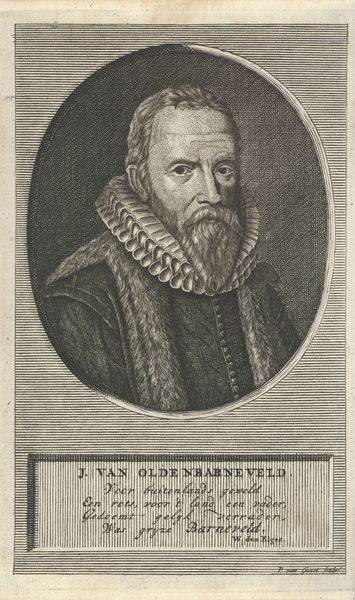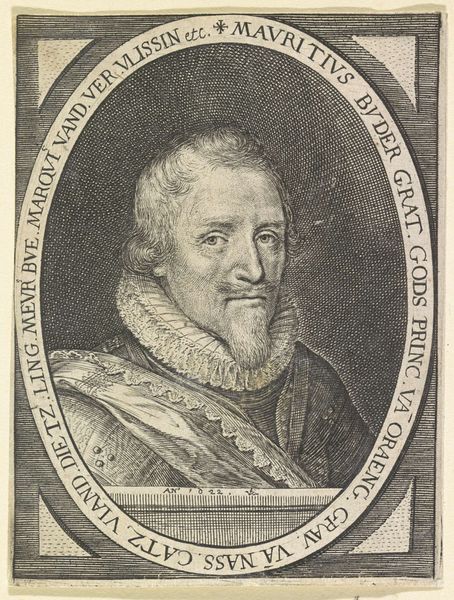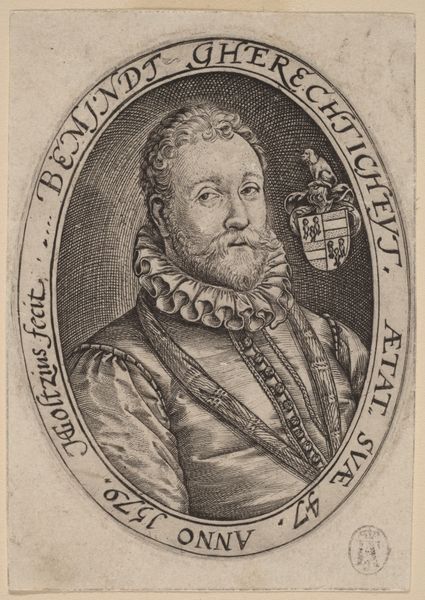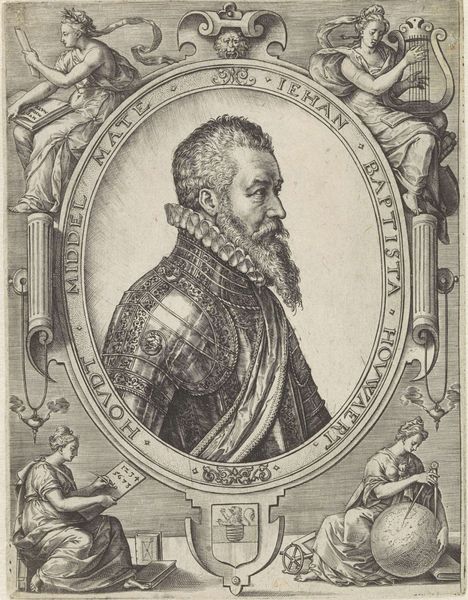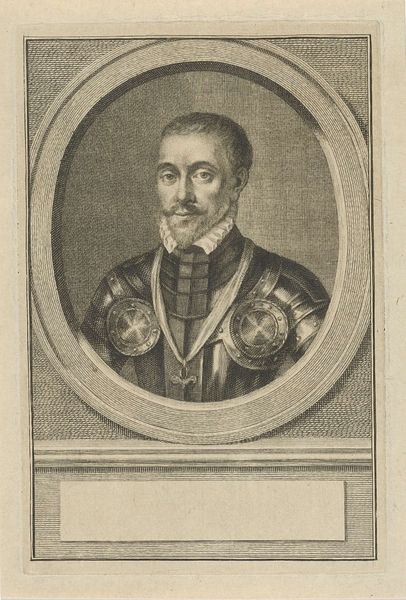
drawing, print, engraving
#
portrait
#
drawing
#
portrait image
# print
#
old engraving style
#
11_renaissance
#
portrait drawing
#
history-painting
#
engraving
Dimensions: height 173 mm, width 116 mm
Copyright: Rijks Museum: Open Domain
Editor: Here we have a portrait of Philip II, King of Spain, made after 1661 by Pieter de Jode II. It's an engraving, which gives it this stark, almost severe look. I’m struck by the weight of history emanating from this image; it feels very formal and considered. How do you interpret this work? Curator: What strikes me is how an image like this functioned as more than just a likeness. Consider the deliberate inclusion of symbols and text, meticulously engraved around Philip's portrait. These aren’t mere decoration; they're carefully chosen visual cues. Do you notice the crown and heraldic shield at the bottom? Editor: Yes, they definitely seem significant. The text too. Curator: Exactly. They broadcast Philip's lineage, power, and claims to territory. Think of it as carefully constructed propaganda, designed to reinforce his authority. It speaks volumes about how identity and power were performed and perceived in the 17th century through symbolic visual language. We see cultural memory in action! Editor: So, it’s less about capturing his true essence and more about solidifying his image as a ruler? Curator: Precisely. Each element—the opulent clothing, the chain of office, even the stern expression—contributes to a pre-determined message about kingship and divine right. Consider the implications – who was this message intended for? And what response did they hope to elicit? Editor: It’s amazing how much information and intention is packed into a single portrait. I’ll definitely look at portraits differently now. Curator: Indeed, understanding the symbolic vocabulary of a period allows us to truly decipher the messages these images convey. It is history rendered visually.
Comments
No comments
Be the first to comment and join the conversation on the ultimate creative platform.


